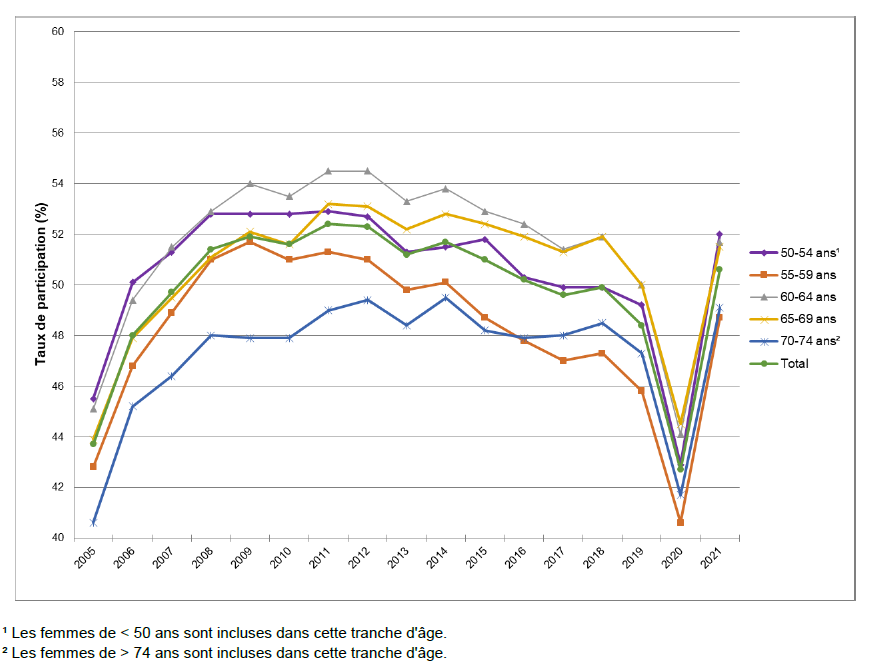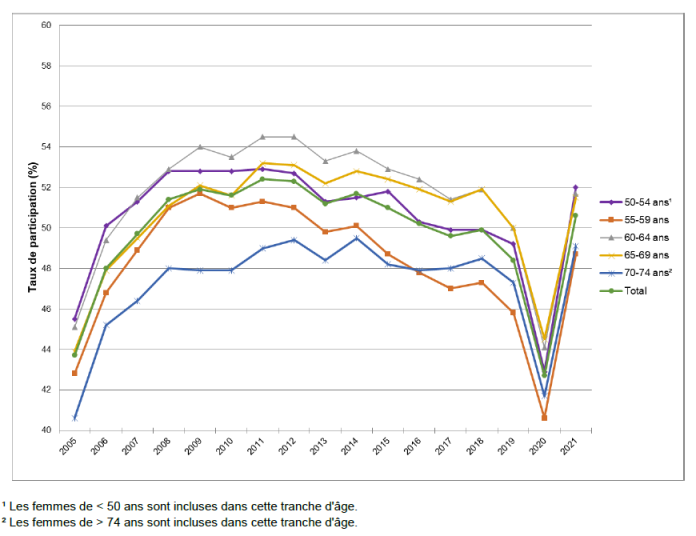Breast cancer: the importance of detecting it at an early stage to reduce mortality
Breast cancer accounts for one third of all new cancers in women. It is the most common cancer in women in France and the leading cause of cancer death with 12,146 deaths in 2018. It is the subject of an organized national screening program in order to be detected at an early stage. and reduce mortality.
Among the known risk factors for breast cancer, modifiable lifestyle factors have been identified, including alcohol consumption, smoking, overweight/obesity and lack of physical activity. Indeed, in metropolitan France, it is estimated that around 15.1% of breast cancers in women over 30 in 2015 were attributable to alcohol consumption and 4.4% to smoking. [Circ 2018]. According to this same study, 10.6% of postmenopausal breast cancers (women over 50) were attributable to overweight and obesity.
Breast cancer screening: a slight increase in participation in 2021, which catches up with the drop observed in 2020 but which remains lower than that of previous periods
2.7
million women had an organized screening mammogram in 2021
During 2021, 2.7 million women had an organized screening mammogram, which corresponds to a national participation rate of 50.6% (versus 42.6% in 2020). While participation in 2021 partly made up for the deficit for the year 2020 due to the COVID-19 pandemic and confinements, participation for the 2020-2021 period (46.6%) remains lower than that for the 2018 period. -2019 (49.1%) for all age groups, all metropolitan areas and almost all departments. Indeed, since women are invited to undergo screening every 2 years, it is necessary to look at the data over periods of two rolling years.
COVID-19 likely continued to disrupt breast cancer screening in 2021, but the general decline in screening seen since 2012 across all age groups and regions may be continuing. Among the other possible explanations, the impact of the controversy over the benefits and risks of breast cancer screening, the decline in the supply of senology leading to difficulties in carrying out mammograms, as well as the increase in the time between two screenings.
It should be noted that organized screening only represents part of the practice of screening in France, and some women do it outside of the recommendations.
Evolution of the participation rate in organized breast cancer screening, by age – Period 2005-2021

Regional disparities noted and very low participation in Ile-de-France and in the South-East
Participation for the 2020-2021 period varies from 21.4% in French Guiana to 53.6% in Centre-Val de Loire. We observe the same geographical gradient as for the previous periods, with the highest levels of participation going from Brittany to the Rhône-Alpes region, and a very low participation in Ile-de-France -36.7%) and in the South-East (36.1% in PACA).
In 2021, participation by department varies from 29.2% in Guyana to 65.7% in Savoie. For the period 2020-2021, it varies from 21.4% in Guyana to 58.0% in Côte d’Or and Indre-et-Loire.
Reduce risk factors thanks to our prevention systems
Several systems accessible to all have been put in place by Public Health France. Understanding health issues, reducing risks, modifying behaviors… find all the information and tools in our files and our dedicated websites concerning:













